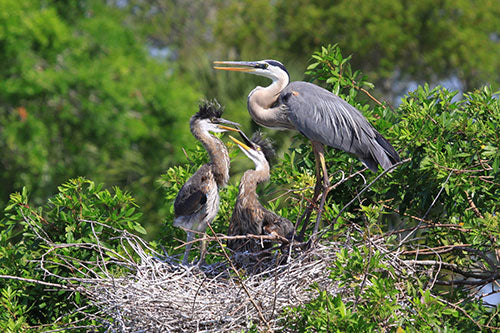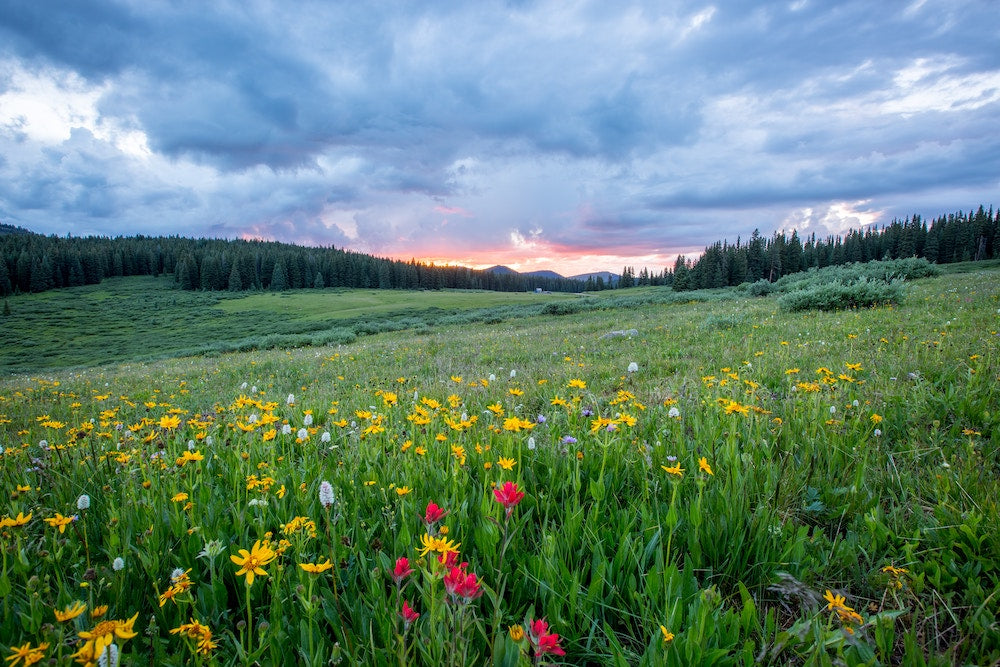Inspired for an Adventure? Check out Beef Stroganoff - Pouch and Beef Stew - Pouch
Free Ground Shipping On All Orders
Over 2,100 Reviews
Add description, images, menus and links to your mega menu
A column with no settings can be used as a spacer
Link to your collections, sales and even external links
Add up to five columns
Add description, images, menus and links to your mega menu
A column with no settings can be used as a spacer
Link to your collections, sales and even external links
Add up to five columns


Everybody has their own favorite season, of course, but in North America, the hallmarks of Spring are very nearly universally appealing. It’s hard to resist, after all, the perfumed scent of blooming wildflowers on the breeze, the happy trickle of meltwater streams, the symphonies of birdsong in the marshes and meadows, and other signs of vernal reawakening on the heels of winter chill and quiet.
As we all take advantage of the longer days and warmer temperatures for hiking, camping, paddling, and other outdoor fun, let’s take a moment to spotlight just a few of the classic natural phenomena that spice up those spring activities and truly help define the season!
Nesting Time
Birds of every description are bringing forth new generations this time of year: both those that stick around your neck of the woods as year-round residents and the rich cast of characters freshly arrived as seasonal breeders. Out and about, you might see cavity nesters such as woodpeckers and bluebirds attending to their tucked-away broods, songbirds flitting to theirs in the heart of tangled thickets or wavering wetland reeds, swallows looping in and out of mudbank holes and bridge-trestle nests.
Two large birds found across much of the U.S. nest in particularly conspicuous fashion. Great blue herons, one of our very biggest native waterbirds and among the most widespread ones as well, nest communally in treetop rookeries or "heronries." Their big, ragged nests are easiest to see before the bottomland and riparian trees they favor as scaffolds leaf out, but even now the rookeries aren’t hard to find from a kayak or riverside hiking trail if you keep your eyes out: The back-and-forth flights and hunched roosting of the adult herons will often betray the location of a nesting commune, often set amid some of the tallest stands in the vicinity. If you’re lucky, a pair of binoculars or spotting scope might reveal a glimpse into one of the heron nests itself, in which case you’ll see just how utterly prehistoric and Jim Henson-esque a great blue heron nestling looks.

It’s also often easy to locate the large stick nests of those slender fish-eating raptors known as ospreys - which happen to be some of the most widely distributed birds in the world. Osprey aeries may be situated in large trees or snags or atop telephone poles, transmission towers, and other manmade infrastructure. Commonly used year after year by the same osprey pair, these nests may become truly enormous: more than 10 feet deep, even. Watch for the male osprey flapping nest-ward with a dangling fish, or one or both of the parents noisily driving off other ospreys that drift too close. A particularly unforgettable place to see nesting ospreys is in the Grand Canyon of the Yellowstone in Yellowstone National Park, where osprey aeries top some of the volcanic pinnacles studding that huge and colorful chasm.

The Bloom Show
Nothing says spring quite like the sight (and scent) of flowers, and every corner of the country has its own blossomy spectacle. Eastern deciduous forests are well known for their spring ephemerals: groundcover wildflowers such as bloodroot, trout lily, trillium, and spring beauty that burst forth their petals in the rich sunlight enjoyed before the canopies fully leaf out. Swamps and river bottoms in both the East and the Northwest erupt with the giant leaves and odd blooms of skunk-cabbages, often in the company of marsh marigolds.
The glacier lily of the western mountains and the more restricted avalanche lily of the Pacific Northwest famously bloom even before lingering winter snowdrifts have melted.

Waterfalls at the Max
Melting snow and spring rains mean this is the time of year (and, depending on the location, into early summer) to observe many mighty waterfalls at peak discharge. May and June, for example, tend to see the world-famous falls of Yosemite Valley at their most vigorous-a spectacle well worth making a special springtime pilgrimage to this Sierra Nevada kingdom to experience. (For inspiration, check out our Mountain House roundup of some of the greatest waterfalls across the Lower 48 states.)
(Given many of you Mountain House fans are backcountry travelers, it’s worth inserting a related seasonal safety note here: Spring rivers, swollen and raging, are major hazards this time of year out in the wilds. Read up on our river-crossing tips here, recognizing that many a springtime flow is simply too dangerous to try to ford.)

Frogsong
The trilling and croaking of frogs easily rank among the most arresting elements of springtime soundscapes. From the iconic keening of spring peepers in the East to the ratchety croaks of Pacific tree frogs in the Northwest, members of the chorus-frog genus make among the most distinctive and audible contributions.

Gator Roars
In the American Southeast, spring’s sonic signature isn’t only about cheeping frogs and birds: It’s about the great hissing roars of male alligators in breeding mode. If you’re out paddling this time of year in southern swamps or marshlands, you may well hear this bone-rattling announcement, which sounds like it hails straight out of the Mesozoic. (And, in actual fact, gator bellows were among the sounds used to create the T. rex’s roar in Jurassic Park.) For the most part, there's no need to freak out about this legitimately freaky sound, but practice common sense if you're paddling in alligator country, and always give these burly reptiles a healthy berth-not least when they're riled up about love.

Bear Cubs
While many critters wait till spring’s full bloom to give birth, female bears (sows) have their cubs in late winter when they’re still dozing in dark, cozy dens. Mother bears emerge with their cubs - typically two or three in-tow, usually a bit later than the male bears (boars) abandon their dens for the season. Black-bear cubs rely on their impressive tree-climbing skills to stay (mostly) out of trouble: Their mother will warn them up a trunk if the family runs into a potential predator, the most dangerous of which tend to be male bears; such a threat may send the mother black bear up the tree right after her offspring. Grizzly mothers are more likely to actively defend their cubs, which means any hiker in griz country this time of year needs to be familiar with proper bear-safety protocol-and ought to have bear spray holstered and at the ready.
(This is a great time of year, speaking of, to be boning up on bear safety. A good starting place is our very own Mountain House review of bear safety 101!)

Spring Adventures with Mountain House
Here’s wishing you a fantastic itinerary of spring outdoor activities this year, enlivened maybe by some of the natural signs of the season we discussed above as well as a tasty Mountain House meal at the campsite or lunch spot. What are your favorite hallmarks of springtime, meanwhile? Feel free to share in the comments!

MRE vs Freeze-Dried Food

What Ingredients Are in Mountain House Freeze-Dried Meals?


Stay Hungry for Adventure
Sign Up for Delicious Outdoor Meals & Exclusive Offers!
By clicking ‘Join Now’, I agree to the Terms of Service and Privacy Policy.


Join the adventure
©2025 Mountain House — All Rights Reserved.
Your Cart is Empty
Continue ShoppingYour Cart
Subtotal
$0.00
EXPRESS PAYMENT METHODS AVAILABLE IN CHECKOUT
Taxes and Shipping Calculated at Checkout
Your ExpertVoice deal.
$[Deal Price]
$[Original Price]
Discount applied at checkout.
On sale now — lower than your ExpertVoice discount.
Not eligible for ExpertVoice discount.














